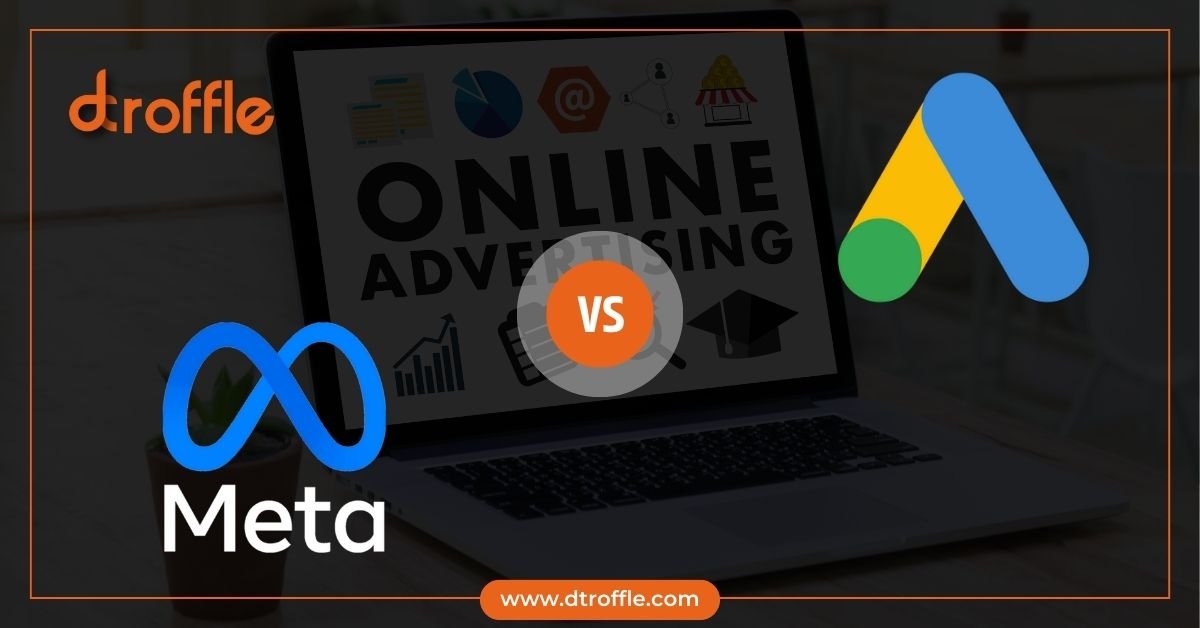In the digital advertising landscape, two major players dominate Google Ads vs Meta Ads (formerly Facebook Ads). Both platforms offer unique advantages and target audiences, making it crucial to understand their differences to choose the right one for your business. In this article, we’ll compare Google Ads and Meta Ads across several key areas to help you decide where to invest your marketing dollars.
Audience Targeting
- Google Ads: With Google Ads, you’re tapping into the world’s largest search engine. This platform is ideal for intent-driven marketing, where users are actively searching for products or services. Google’s targeting options include keywords, location, device type, and more, allowing you to reach users when they’re ready to act.
- Meta Ads: Meta Ads excel in demographic and interest-based targeting. Leveraging the vast amount of user data from Facebook, Instagram, and other Meta platforms, you can create highly targeted campaigns based on users’ behaviours, interests, and demographics. This makes Meta Ads particularly effective for brand awareness and engaging users who may not be actively searching for your products but are likely to be interested.
Ad Formats
- Google Ads: Google offers a variety of ad formats, including text ads, display ads, shopping ads, and video ads. Text ads appear at the top of search results, while display ads are shown across Google’s vast network of partner websites. Shopping ads are highly effective for e-commerce businesses, and video ads on YouTube provide engaging visual content.
- Meta Ads: Meta Ads are known for their visually engaging formats, such as image ads, video ads, carousel ads, and slideshow ads. These ads appear in users’ feeds on Facebook, Instagram, and other Meta platforms, blending seamlessly with organic content. Meta Ads are particularly strong in visual storytelling, making them ideal for brands looking to create a strong visual presence.
Cost and ROI
- Google Ads: Costs can vary significantly depending on your industry, keywords, and competition. Google Ads typically operates on a pay-per-click (PPC) model, meaning you only pay when someone clicks on your ad. While the cost per click (CPC) can be higher than on Meta Ads, the intent-driven nature of Google searches often results in higher conversion rates.
- Meta Ads: Meta Ads generally offer a lower CPC compared to Google Ads, making them an attractive option for businesses with smaller budgets. However, the ROI can vary depending on the campaign’s objectives. Meta Ads are excellent for building brand awareness and generating leads, but they may require more nurturing to convert leads into customers compared to the direct intent of Google Ads.
Performance Tracking
- Google Ads: Google Ads provides detailed analytics and tracking, allowing you to measure performance down to the keyword level. You can track conversions, set up goals, and use Google Analytics for in-depth insights into user behaviour.
- Meta Ads: Meta Ads also offer robust tracking and analytics through the Facebook Ads Manager. You can track engagement, conversions, and even cross-platform performance. Meta’s analytics tools are powerful for understanding how your ads are driving interactions across the Meta ecosystem.
Conclusion
Choosing between Google Ads vs Meta Ads depends on your business goals, target audience, and budget. If you’re looking to capture users with high intent, Google Ads is likely the better choice. However, if your goal is to build brand awareness and engage with a broader audience, Meta Ads might be more effective. For many businesses, a combination of both platforms can provide the best results. Explore both options and see which one aligns with your marketing objectives, or consider integrating both into your strategy for a comprehensive approach.








